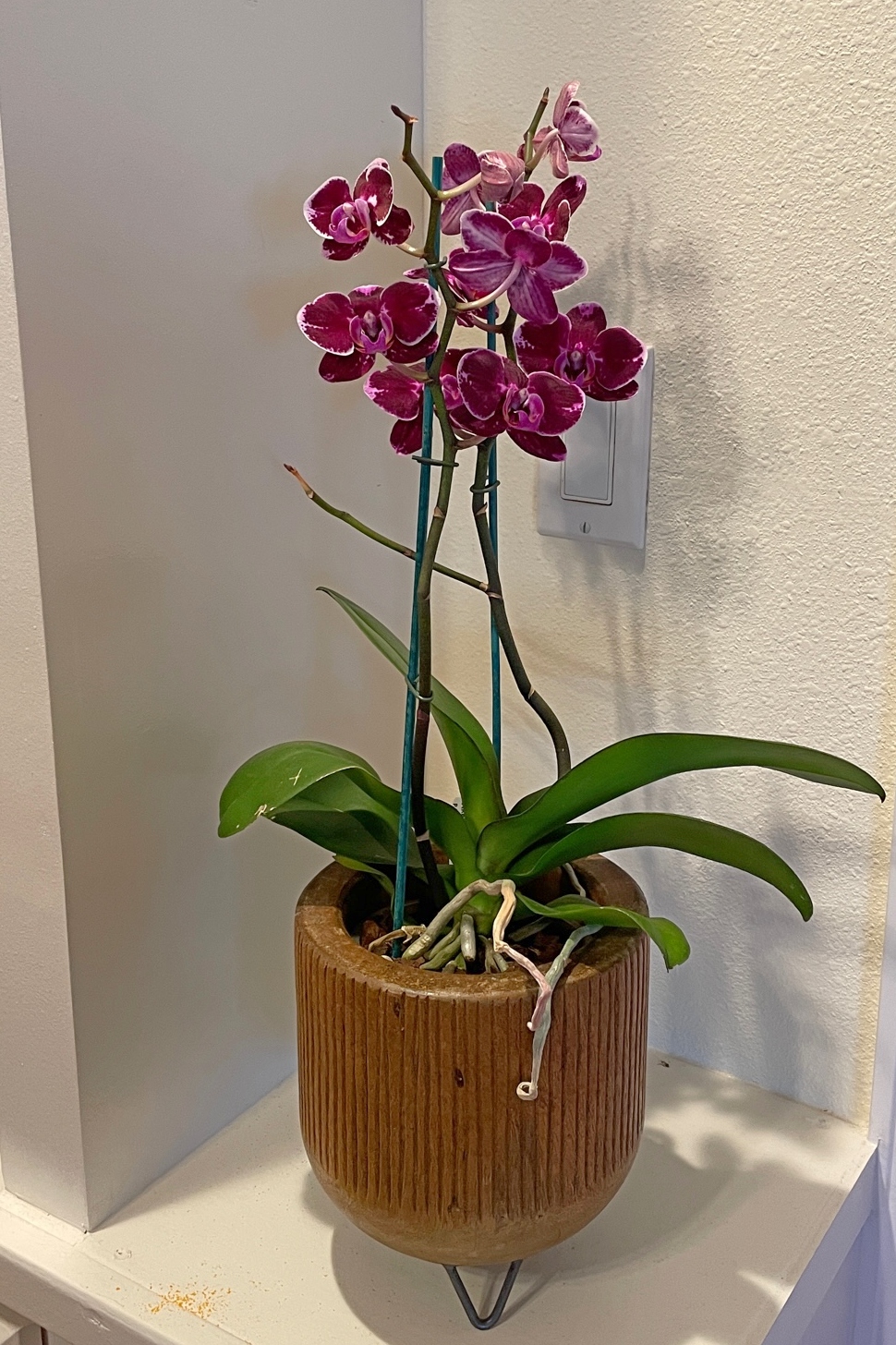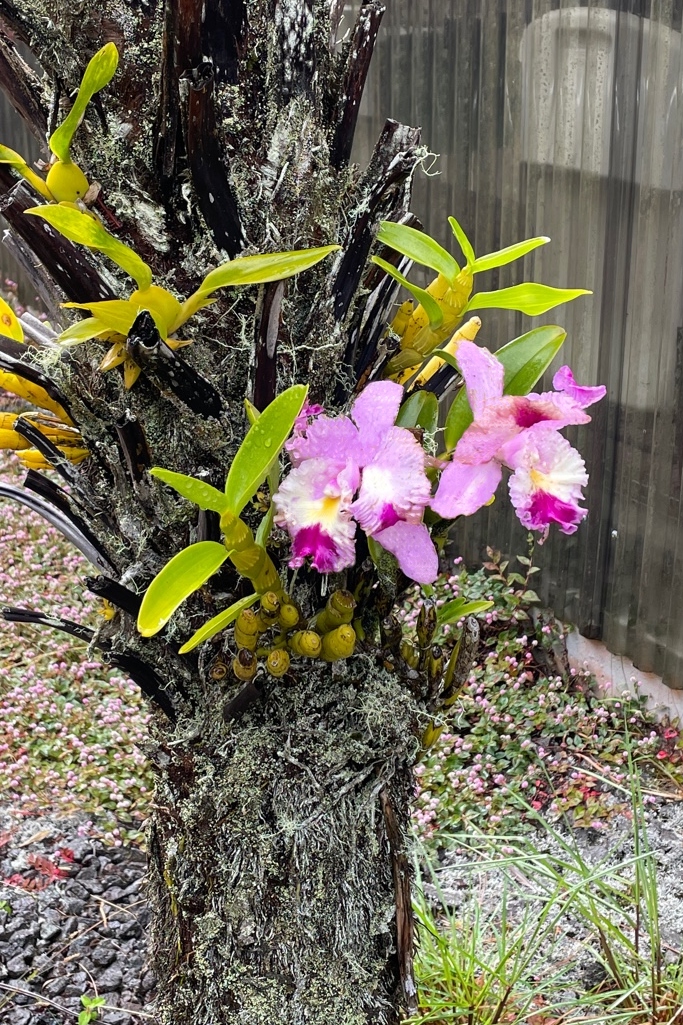
Orchid Care: Growing Indoors vs. Outdoors
Posted by Kamaile O. on Sep 6th 2023
Orchids add beauty and visual interest to their environment both indoors and outdoors.
Plus, they’re versatile: some varieties thrive outdoors, while others grow more happily inside as a potted plant.
Orchid plants are hardy, can withstand periods without water, and don’t require direct sunlight. Their low maintenance lifestyle combined with beautiful blooms allow potted orchids to be one of the most common plant decor in homes and offices. Those factors also make orchids one of the best floral gifts even if the recipient has never cared for one before.
Whether you choose to grow these magnificent plants in your home or outside in your garden here’s what you should know about proper orchid care.
Growing orchids indoors

The basic care guidelines remain the same whether you grow the orchid inside or out. They will require the same amount of sunlight, water, temperatures, fertilizer, and humidity but what might vary between locations is how you’re able to control or make up for these factors.
Because most of these flowering plants are epiphytes, naturally found growing on tree bark and branches, their ideal potting media will typically consist of a chunky mixture of bark chips, perlite, moss, and other breathable materials to retain just enough moisture but allow airflow.
So how should you water your potted orchid?
Orchids should be watered thoroughly about once a week. Whether you decide to dunk your potted plant or set the pot under running water, be sure the medium is completely wet, but no water is left standing in the leaves or crown and never leaving it to sit in a pool of water. Allowing the roots to dry in between watering is important, as too much moisture can cause rot.
If no direct sunlight, how much light does an orchid need?
Orchids grow best in an area where it will receive at least 6-8 hours of bright but indirect sunlight per day. East facing windows offer the most ideal lighting. Different types of orchids may require more sunlight to grow and rebloom so refer to our Orchid Care Guides for more in-depth information for each variety.
What is the ideal temperature for orchids?
As with the other factors, different orchids can endure slightly cooler and warmer temperatures, but the best temperature range is 60-80F. Many orchids benefit from a 15 degree swing between day and night so placement near windows can help to achieve this more naturally felt occurrence.
Is orchid fertilizer necessary?
Orchid fertilizer may not be considered necessary, but it can be extremely beneficial. In nature, nutrients and minerals may have been acquired in the environment. Either by applying a balanced liquid fertilizer at 1/2 the recommended rate weekly or utilizing a slow release nutricote blend can help to keep the plant healthy and vigorously growing.Reduce fertilizing when the new shoot has completed its growth so buds may initiate.
Phalaenopsis is one of the most popular varieties and the species that typically comes to mindwhen people picture an orchid with its iconic, long-lasting flowers. This variety is hardy enough towithstand a wide range of indoor temperatures and little light.
Growing Orchids Outdoors

Add a striking effect to your gardens with these as outdoor plants, available in a wide variety of species and colors. In climates that don’t experience frost, orchids can be placed or mounted on a tree in an area that receives morning light and sees ample but indirect sunlight under the shade of the canopy.
When deciding where to place your orchid outside, first determine whether the genus is of an epiphytic nature or a terrestrial type as most cannot survive planted in the ground.
If there is minimal humidity and your plants dry out more frequently, they should be watered more to prevent excess dryness. If you’re in a location that receives more rainfall, but your orchid has been left in a pot, be sure to set the orchid in a way that will help it from catching water in its leaves ideally under the protection of tree branches.
Cattleya, widely considered one of the most exquisite varieties for its large, flamboyant flowers, performs well in bright filtered light and can handle a variety of temperatures. This type of orchid does particularly well mounted on trees here in Hawaii. If you have a sunnier space, consider cymbidium, which is tolerant of almost full sun. Oncidium, a particularly large variety, is well-suited for high elevations. There are terrestrial varieties of orchids such as Spathoglottis and Phaius that thrive planted in the ground.
No matter which type of orchid you have in mind, these quality plants can help to beautify both your home and garden.
